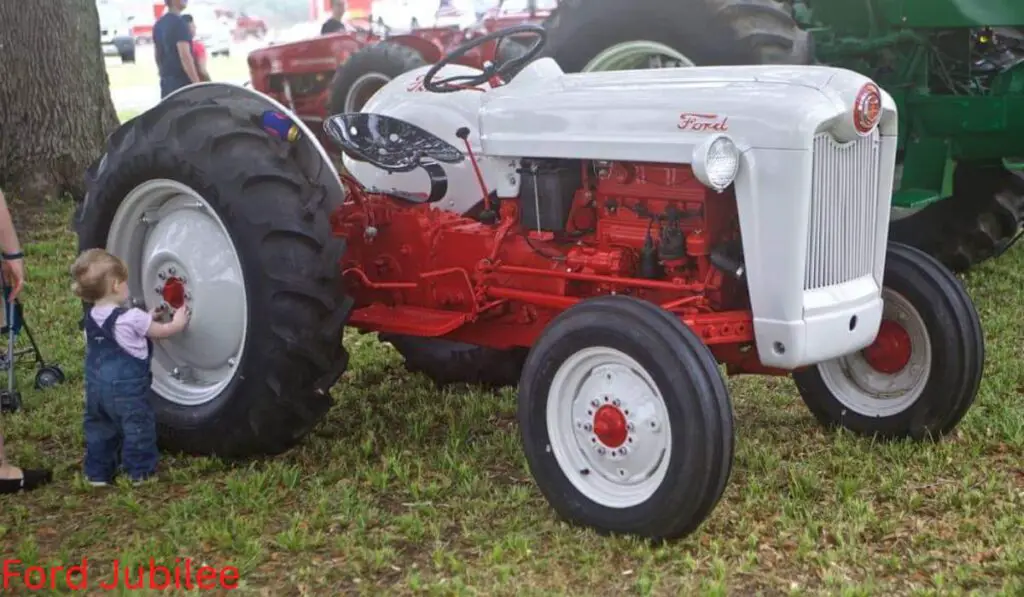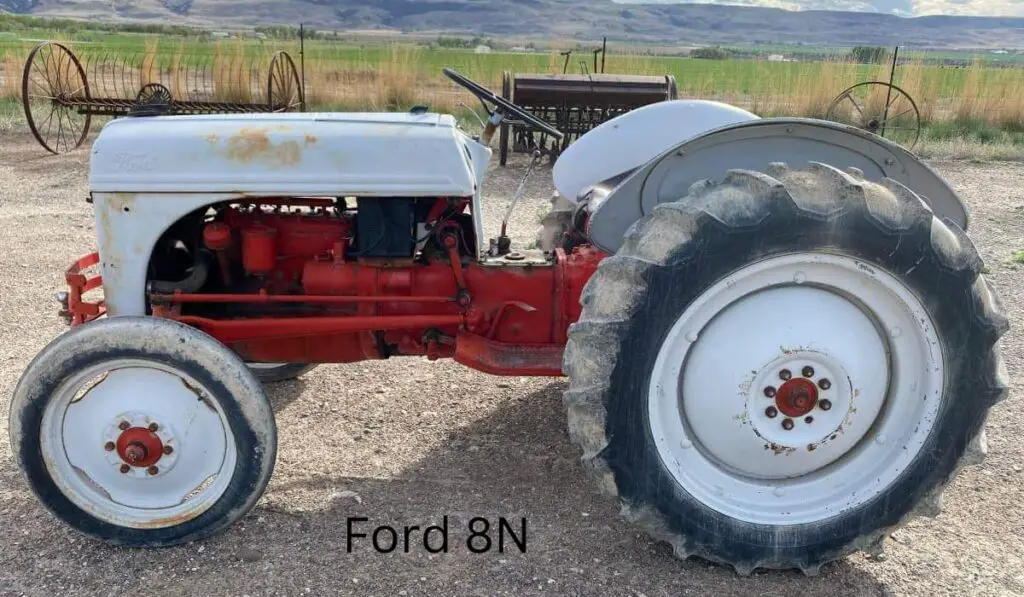Ford has been a mainstay in automotive manufacturing since car-making technology was in its baby steps. Ford is a versatile brand with arms spread across various sectors, including farm equipment.
Under the farm equipment category, we bring you the Ford Jubilee vs 8N discussion. The two tractors were a mainstay in the post-war era and were considered the original utility tractors.
The Ford Jubilee and 8N are popular among vintage tractor enthusiasts, who appreciate their reliability. An in-depth comparison of these Ford tractors will shed more info on their differences and selling points. Keep in mind that Ford no longer manufactures tractors.
Contents
A Brief Overview of Ford Jubilee and 8N
The Ford 8N was the last release of the N-series tractors, debuting in 1947 to succeed the 9N and 2N models. At the time of its market entry, it was a powerful piece of equipment, sporting a 4-speed transmission, an upgrade from the standard 3-speed.
The functionality of the 8N made it very popular, selling over 530000 units globally. Production continued until 1952, when the Jubilee debuted.
Also known as the Ford NAA, the Jubilee was larger than its predecessor, and its release commemorated Ford’s 50th anniversary. Jubilee’s production continued for two years, ceasing in 1954, with around 130000 units sold.
Ford Jubilee vs 8N Comparison
Let’s look at the Ford 8N vs Jubilee differences.
Styling
The first noticeable difference between the two tractors is their styling. The Jubilee is larger, with a more prominent grille than its predecessor. It has a wheelbase of 73.875 inches and weighs 2550-2814 pounds. The 8N’s wheelbase is 70 inches, weighing 2410-2717 pounds.
Both utilized the same color blend; a grey body punctuated with red. A hasty look at the two tractors, and you may think the Jubilee is a facelift of the 8N. The Jubilee has a large nose badge to indicate Ford’s anniversary.

Engine
The 8N comes in two varieties: one uses a 2.0-liter, 4-cylinder gasoline engine, while the other has a 2.0-liter, 4-cylinder distillate engine. The liquid-cooled engines have a displacement of 2 liters and a bore/stroke of 81 x 95mm.
Under the hood of the Jubilee is a 2.2-liter, 4-cylinder gasoline engine with a bore/stroke of 87 x 91mm. The Jubilee’s engine is sturdier than the 8N’s but by a slight margin.
Performance
Tractor power translates to efficiency on the field. As we can see, the Jubilee has a more robust engine than the 8N. The Jubilee’s engine has a 33.4 horsepower rating, while the 8N’s is 30.4 horsepower. Additionally, the Jubilee has a torque of 110 lb-ft, and the 8N’s torque is 92 lb-ft.
While we can see that the Jubilee is more powerful, we must consider the weight factor and its effect on performance. The power values of the two tractors don’t vary that much. While the Jubilee has a sturdy engine, its weight adds more drag. It is safe to say that the performance indices of the two ford tractors are almost the same.
The heavier Jubilee will handle better on the farm. The 8N can achieve better handling by increasing its mass via ballasting.
Fuel Efficiency
The Ford Jubilee has an 11-gallon fuel tank, while its counterpart has a 10-gallon fuel tank. With their displacements and weights factored in, we can see that Ford Jubilee vs 8N fuel efficiency comparison ends in a tight draw.
Transmission
The Jubilee and 8N have a 4-speed transmission, with four forward and one reverse gear. The former has a 4.7-liter oil capacity, whereas the latter’s capacity is 18.9 liters. The 8N also relies on the Sherman combination transmission, which was popular in the past, and has 12 forward and 3 reverse gears.
Tires
The Ford NAA has 16-inch front tires and 28-inch rear tires. On the other hand, the 8N has 19-inch front tires and 28-inches at the back. The bigger frontal tires in the 8N help handling and prevent soil compaction when working on the farm. It also aids in weight distribution, which is crucial when working on rugged terrains.

Price and Resale Value
When the Ford 8N debuted, it went for around $1404, while the Jubilee cost $1560. This was in the 1950s, an equivalent of $17000 to $18750 today, the average cost of a new tractor.
Presently, you can get one from $1000 to $4000, depending on the state. Grounded ones may be cheaper, but you will spend more to bring them to life.
Spares are readily available, considering these two models sold several units. The resale value is decent; the price may remain the same or drop by a few dollars for a well-maintained Jubilee or 8N. Vintage car enthusiasts may pay more for these tractors.
Verdict
The Ford Jubilee and 8N tractors are still sought by many today, over 70 years since their debut. So, Ford Jubilee vs 8N, which tractor is better? After comparing the two models, we can understand their performance, fuel efficiency, and pricing. The Jubilee is the sturdier, while the 8N is the most efficient. Use this piece to pick an ideal tractor for your farm work.
Hello! My name is Chris, and I am the founder of Yard Floor. When I was a toddler, my family had a lush green lawn. I was at the center of caring for and maintaining this lawn and even proceeded to take an associate’s Degree in landscaping. I am here to share my years of experience with you – be it repairing your mower/tractor or caring for your lawn.
